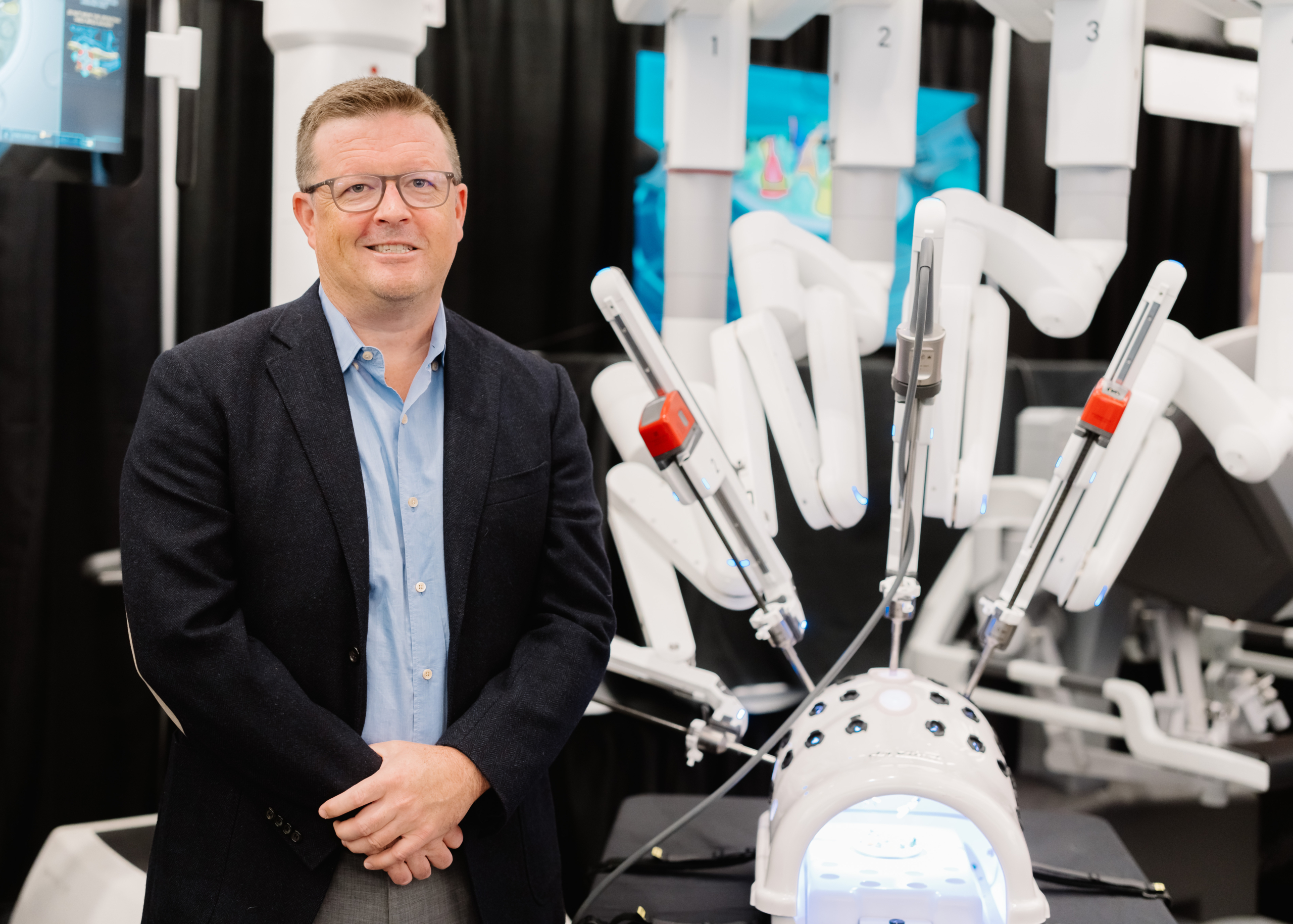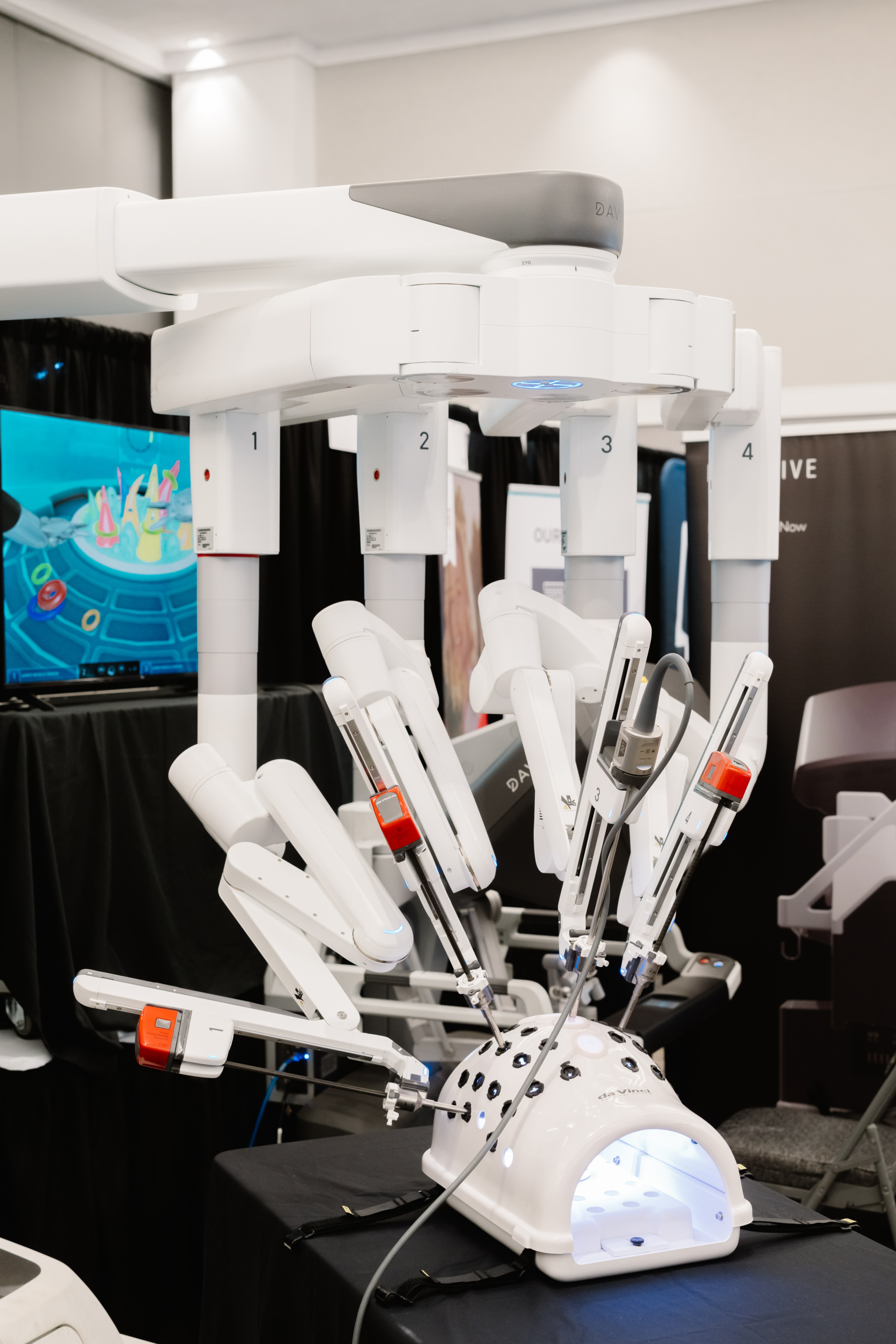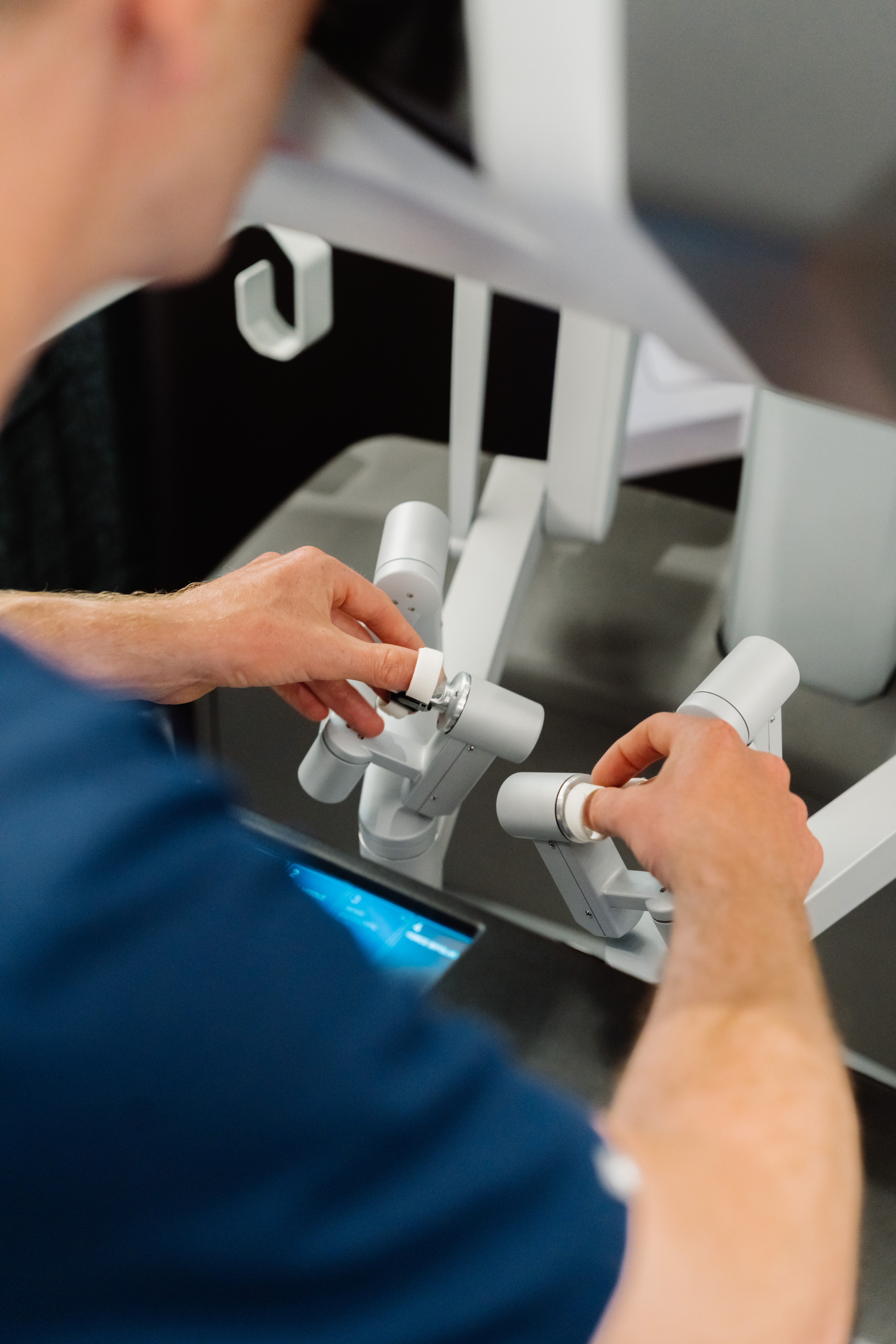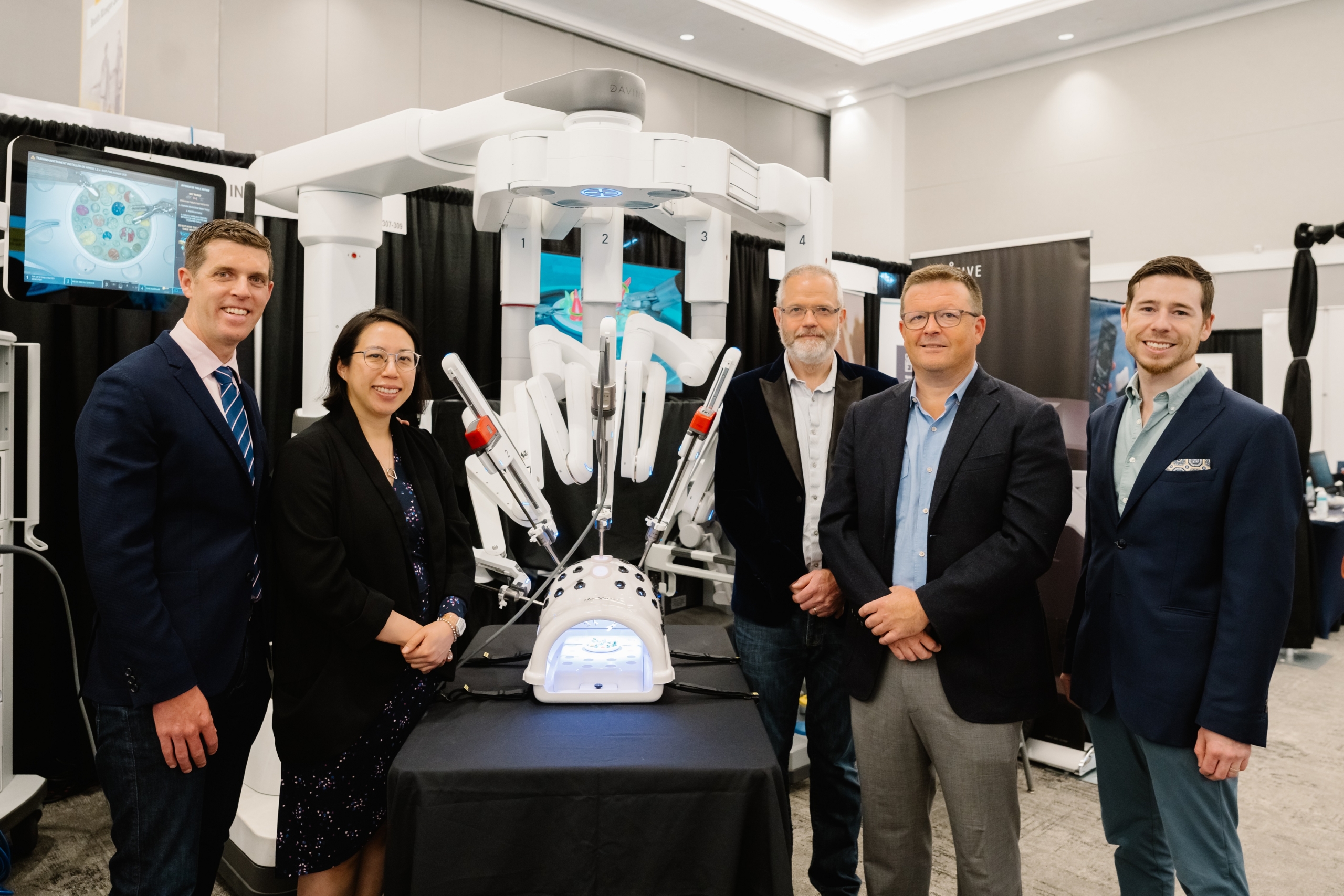
Dear friends of the Foundation,
It is with great pride that I write to you today, as we see the sun come up on an exciting project for surgical care in our hospitals. We are on the verge of something profoundly impactful for Victoria and all of Vancouver Island. I have dreamed of writing this to my community for over 18 years, and I am touched that the time has finally come.
I am a Victorian through and through. I was born and raised here, and I never plan on leaving. My dad was a family doctor in town. He got me immersed with the urology community well into my training, and that is how I became fascinated by the specialty. After residency, I went to do a fellowship in robotics surgery—the future of urology—with the dream of one day bringing its benefits back to Victoria. I feel fortunate to have learned from the now most experienced robotic surgeon in the world: Dr. Jim Porter has recently been recognized for performing a staggering 5,000 robotic surgeries with the Da Vinci robot. That was 18 years ago.
Ever since I came back, I have yearned for the day we bring robotics into our hospitals, especially with robotic surgery becoming the standard worldwide for urology, and for many other specialities like general, gynecological, thoracic, and cardiac surgery. I am thrilled to share that we are meeting the moment now.
 I want to start by setting the stage a little bit. While we don’t have robotics yet, what we do have is a truly dedicated group of surgeons here in Victoria. We’ve researched, learned, and improvised so much over the years. When it comes to urology, we have championed a number of firsts. We were the one of the first sites in British Columbia to start doing laparoscopic urologic surgeries, meaning minimally invasive surgery through keyholes. We have also done more minimally invasive kidney-sparing surgeries (where we remove tumours from kidneys while preserving the remainder of the kidney) than anywhere else on the West Coast. This is a true testament to our team, from our surgeons to our nurses without whom we couldn’t drive advancements.
I want to start by setting the stage a little bit. While we don’t have robotics yet, what we do have is a truly dedicated group of surgeons here in Victoria. We’ve researched, learned, and improvised so much over the years. When it comes to urology, we have championed a number of firsts. We were the one of the first sites in British Columbia to start doing laparoscopic urologic surgeries, meaning minimally invasive surgery through keyholes. We have also done more minimally invasive kidney-sparing surgeries (where we remove tumours from kidneys while preserving the remainder of the kidney) than anywhere else on the West Coast. This is a true testament to our team, from our surgeons to our nurses without whom we couldn’t drive advancements.
We’ve taken innovation as far as we can and now we need help. Robotics is key to take surgical innovation to the next level. With a robot, the instruments we use for minimally invasive surgery now have the concept of wrists inside of them. This gives us a proper arc of motion and is so important when the tools we are using for removal and suturing are less than seven millimetres wide, or the width of a fingernail. Robotics minimize and direct our movement to prevent any unnecessary trauma to the tissues.
The benefits of robotic surgery are extraordinary: enhanced precision, improved visualization, reduced risk of complications and infections, enhanced recovery for patients… I could go on. For urology specifically, we can use the example of prostate removals—90% of which are done with robotics in the United States. When we use robotics in those cases, we see 90% less blood transfusions, 50% shorter stays in the recovery room, and 60% shorter stays in hospital. In addition, there is much lower demand for post-op care, allowing nursing staff to tend to more urgent patients. We have a reachable goal to perform 60% of robotic prostatectomies as day procedures in the future.
I can speak on behalf of all urologists, and many of my fellow surgeons, when I say how thankful we are that robotics is coming to our Victoria hospitals—this is only possible because of Foundation donors.
The first robot will join our operating rooms here at Royal Jubilee Hospital. In the same vein as trying to innovate, we will be leasing the robot to ensure we can upgrade to the latest model as soon as it is released. We are coming to the forefront of surgery—and we want to stay there, too.
I am so excited for what robotics will mean for our patients. The procedures we already do will be transformed. Recovery will be night and day. To quote my wife Holly who is a former gynecology robotics nurse, “When you see a patient that’s coming out of surgery, you can just tell their surgery was performed with a robot because they look like they’re ready to go home.” She’s right: robotic surgery is just that much less intrusive on the body. 
But, what is also extraordinary, is that we will also now be able to perform new surgeries, and get into places we simply cannot reach right now. My colleagues in otolaryngology (ear, nose and throat surgery) for example will be able to do minimally invasive procedures that previously required cutting into the jaw and left patients with permanent scarring, and difficulties in eating, speaking and swallowing.
I am equally excited for what robotics will mean for caregivers. With the surgeries we are performing, there is a number of different ergonomic issues. When we work on the prostate for example, which is at the very bottom of the pelvis, we are needing to lean over a patient for up to five hours, with our backs shaped like an S. It’s painful, and many surgeons don’t last long in the long-term. Robotics gives us microscopic precision, taking our movements and scaling them down from 10,000 to 1. It allows us to get into spaces safely for prolonged periods of time without exhausting everybody in the room.
This goes beyond the procedure room, too. Our nurses are the true backbone of hospital care—they do so much, and we treasure them. With robotics, we are alleviating the intensity and length of the care they provide in recovery. Soon, we will have this stream of patients who usually go from surgery to the recovery room to a few days on the ward, be able to go home right after the procedures. It’s going to decompress the system as a whole.
It’s going to make it better—and by being better, it will attract the best, too. We have just recruited Dr. Greg Hozier to our team. He’s a top tier urologist who has won numerous awards, published over 50 papers in the very best medical journals, and he brings a ton of skill including robotic surgery. I am convinced that without a robot here in the future, we wouldn’t have been able to attract him—or future trainees coming out of big centers who only train on robotics. We’re going to be one of the few community centers now that has this technology to recruit great talent—it really is that impressive what we are doing here.
 Without a trace of a doubt, I wouldn’t be emailing you today if it wasn’t for the Victoria Hospitals Foundation. Avery Brohman and her team have believed in this project more than anyone—they see the need, the reason, the benefits, and the long-term ripple effect.
Without a trace of a doubt, I wouldn’t be emailing you today if it wasn’t for the Victoria Hospitals Foundation. Avery Brohman and her team have believed in this project more than anyone—they see the need, the reason, the benefits, and the long-term ripple effect.
Together, we are going all in, and bringing surgical innovation—including robotics—to the forefront publicly. In a few short weeks, this project we have been speaking about for years will come to the spotlight. I have never felt more excited, and more hopeful for the future of surgery on Vancouver Island.
I invite you to lean in and stay tuned to the Foundation’s upcoming campaign. Connect with Avery—or Heather, Colleen, Beth, Alec, Danielle, Kevin, Leah, Katy, Nicole, or any of the amazing Foundation team members—if you wish to learn more and support surgical innovation.
Most profusely, I thank those in the community who have already come forward to raise the bar when it comes to surgical care in our hospitals. I am grateful to those who are and will be early supporters of what’s next.
This is going to change and save lives.
With utmost gratitude,
Dr. Jeff McCracken





